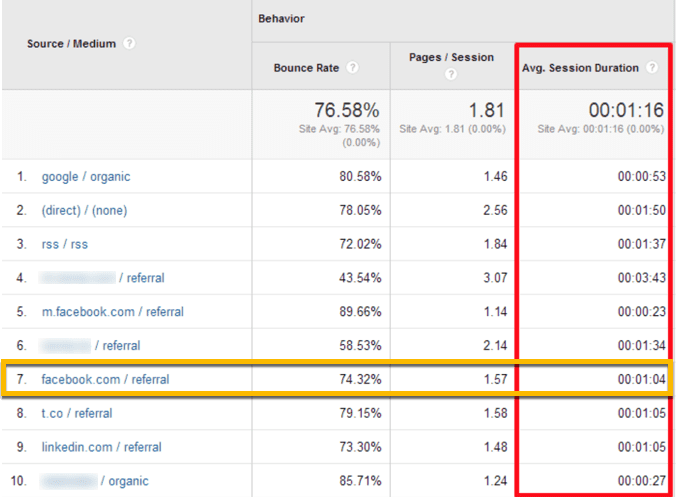FIVE KEY METRICS TO TRACK WHEN MEASURING DIGITAL PR
Summary: How to measure Digital PR is a common question. Rightfully so! Traditionally, PR results have been difficult to measure and track. The emerging field of Digital PR is changing that. This blog post covers five metrics you can (and should) measure in a Digital PR program.
What is the Difference in Digital PR Versus Traditional PR?
Before listing the top five things you should track when measuring Digital PR, let’s answer the question “How is digital PR different from traditional PR?” Actually, the two are more alike than they are different, but the differences create a wide gap between the two.

Both Digital PR and Traditional PR are used to raise awareness and support high-level positioning and/or strategic objectives. Both leverage the influential value of third-party non-paid endorsement. This is done through the use of writers, bloggers and influencers.
Digital PR Metric #1 — Backlinks
In the world of SEO, backlinks represent pure gold. Let me rephrase that … high-quality backlinks represent pure gold. To Google and Bing, a reputable site that adds a backlink to your content is a sign that your content is also high-quality. This is a great measure of how your digital PR campaigns are performing.

Measuring these backlinks is as easy as finding one of the free backlink checker tools. Services such as AHREFs, SEMRush, and OpenLinkProfiler and others offer free tools to check for backlinks.
One note of caution. The free backlink checker can also identify “toxic links,” those links associated with poor quality sites such as click-bait farms and offshore phishing websites. If you find toxic links in your search, contact the webmaster and asked to have them removed or, as a last resort, send a Disavow request to Google.
Digital PR Metric #2 — Link Clicks
Any content you produce, whether it be a press release, blog post, video, Facebook post, etc. should have an actionable component. The best way to do this is through relevant hyperlinks. And “relevant” is a key word here. Google measures the links in your content against the context or theme of the content overall. It uses this information to rank the content (up or down) in search.
So now that I’ve established the value of relevant links, how do you measure activity? One great way is to use Bit.ly for your links. Bit.ly is a free link shortening tool which allows you to track and measure engagement on the link itself. When someone clicks on a Bitl.ly enabled link, that click gets registered in the Bit.ly interface. This enables you to follow levels of engagement (day, time, subject, etc), which acts as a signal for success.
Another way to track link clicks is through Google Analytics. Obviously, you need to have Google Analytics set up on your website first. Once you’ve done that, you can log into the Analytics dashboard and look at the Referral traffic. This statistic shows what pages drove traffic to your site. You can use this to determine what content is working, and what is not in terms of your communication objectives.
Digital PR Metric #3 — Media Monitoring
A great measure of success is understanding where your brand or product is mentioned in third party content. An example of this would be a mention of your company in an industry roundup story in a leading B2B outlet.
There are a number of free and paid tools for getting this information. Google Alerts is a free tool that lets you enter a keyword you want to track (ie the name your new product or service). Once Google’s bot picks up that mention in a crawl, Google will send you an email notifying you of the pickup with a link to the coverage.
Other paid tools such as CustomScoop or BuzzSumo perform a much more robust version of this search analysis. For example, CustomScoop will let you sort pickups by outlet authority and then create a PDF report of that coverage.
BuzzSumo will perform a similar search, but also give you reference to the outlet’s social profile (Facebook, Instagram, Twitter). This information helps you gauge the extended potential impact of the mention beyond the website mention itself.
Digital PR Metric #4 — Viewing Time
The longer an individual spends with your content reading or watching, the greater the value. There are several great ways to measure the amount of time an individual spends with your content.
The first is through Google Analytics. In the Google Analytics report, there is a column called Session Duration. This is an estimated measurement of how much time an individual spent engaged with the content. Rather than look at the overall average for all pages, look at the Average Session Duration for individual traffic drivers, such as the Facebook page referral data.
For example, in the image below, traffic coming from Facebook spent an average 1:04 on the website (versus 1:16 overall). This tells you that the Facebook traffic performed slightly worse than all traffic. From this information, you could determine that you wanted to better optimize your Facebook posts to drive more qualified traffic — those who will stay on the site longer.

Viewing time for video content is just as critical to measure as that for written content. For example, on your YouTube Channel you can measure Average View Duration in much the same way you measure Average Session Duration for a webpage. Over time, you will begin to see trends in viewership that can help you gauge how to improve content for better engagement.
For example, if you notice in a video that viewership seems to be dropping regularly at 2:20 into your video, you will want to take a look at what is happening at that point in the video. Perhaps you shifted to a topic that viewers lost interest in. Or, you might determine that 2:15 seems to be the maximum attention span of your audience, so you can tailor your videos to be shorter to accommodate this trend.
Digital PR Metric #5 —Bounce Rate
Bounce Rate reflects the degree of appeal for your content. Again, this is a metric that you can review as part of your Google Analytics dashboard. Bounce rate is the percentage of single page visits (or web sessions). It is the percentage of visits in which a person leaves your website from the landing page without browsing any further.
A high bounce rate — say 80% — reflects the fact that only 20% of visitors are staying on your site to visit another page. In most cases, this is a sign that your content is not connecting with your audience. Think of it as someone who is browsing in a mall and walks into a store to check it out. After quickly surveying the store has nothing of interest, that person leaves.
The Bounce Rate is very similar. You want to analyze the Bounce Rate to determine how engaging your content is, and edit pages as need to try and lower the Bounce Rate.
One instance where a high bounce rate may be misleading is with the blog component of a website. Often a reader will visit a blog to read about a single topic in the blog post, and then move on. When they do this, Google will record the single page visit as a Bounce, but in actuality, that person may have gleaned exactly what they were looking for in the post before moving on.
So be sure to take this into account when you are analyzing the Bounce Rate so you don’t fix something that is not necessarily broken.
Measure, Refine, and Measure Again
Measuring success of your Digital PR efforts is a dynamic process that should be done over an extended period of time. Don’t make significant changes in direction based on one or two months of data. At that point, you don’t have enough solid trending data to make a smart choice.
Some of the changes could be due to cyclical or market dynamics that are affecting all those in the market. In any case, it’s best to take a long view of measurement for the data to have the best results. Over time, as you measure, refine (based on results) and measure again, you should start seeing positive trends in your Digital PR and content marketing efforts.
And, with all things consistent in your operations and the market, you should see a rise in sales as your Digital PR efforts also trend upward.

Bill Threlkeld is president of Threlkeld Communications, Inc., a digital PR consultancy based in Santa Monica, California. Threlkeld Communications, Inc. specializes in Digital PR strategy and tactics, with a focus on integrated content campaigns. This approach to Digital PR is known as the Content Distribution Ecosystem, a unique content approach that synchronizes and integrates PR, Social Media, Blogs, Audio, Video, Email Marketing and other content.
